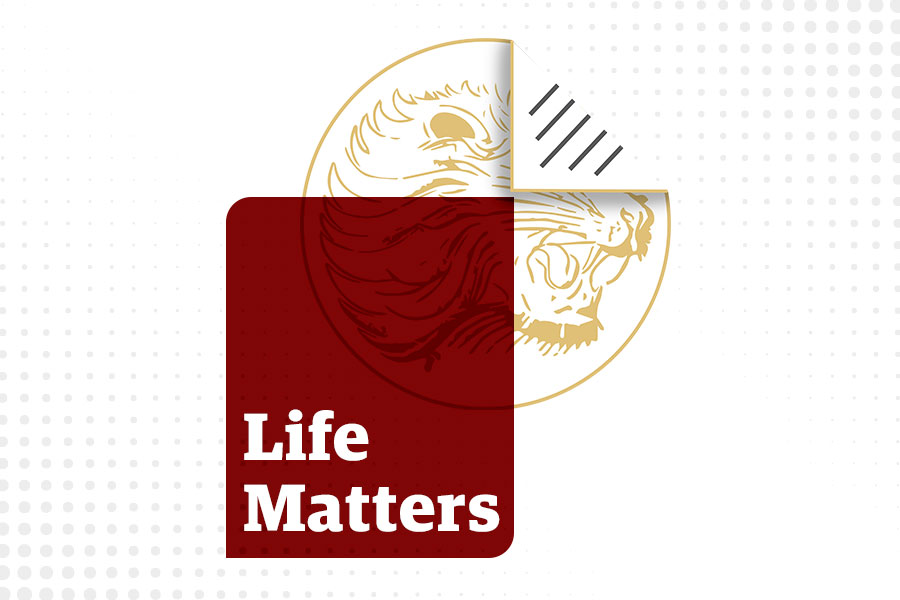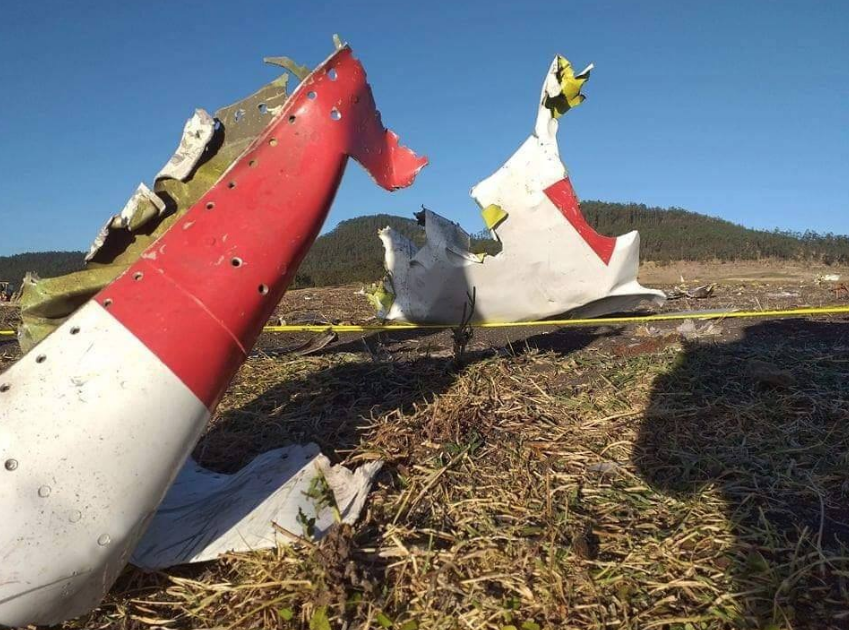
Life Matters | May 31,2025
It has been almost three months since Konjit Shafi lost her younger brother, 31-year-old Sintayehu Shafi, on the fateful crash of Ethiopian Airlines Flight 302, a Boeing 737 Max 8 that plunged into a farm field a few minutes after takeoff from Bole International Airport in Addis Abeba, killing all passengers and crew.
The tragic loss of her brother has devastated her and her family and has left them in a state of agony. Sintayehu was the youngest child and a pillar of the family - the man of the house who took care of everything, according to Konjit.
“He was a lovable, kind, funny and sociable guy that everyone liked,” she remembered.
The family lives on the outskirts of the city, a few kilometres away from Bole International Airport. Planes departing the airport fly over their house with the attending loud noises as a constant reminder of their tragic loss.
In the living room, Sintayehu’s awards are displayed along with some photographs of him.
“He was a perfectionist who truly cared about his job,” Konjit said.
After graduating from Assela TVET College in 2007 and specialising in auto mechanics, Sintayehu joined Motor & Engineering Company (MOENCo) as a service and repair electrician trainee. It only took him a short time to be promoted to an assistant training manager and senior training instructor. He also earned his first degree in mechanical engineering.
His work ethic earned him a spot in a week-long training offered by Toyota Motor Corporation in Nairobi, Kenya. Sintayehu was on his way to this training in Kenya when he boarded Ethiopian Flight 302 on March 10, 2019, along with 154 other people who hailed from 35 different countries, including the pilot, the co-pilot and eight flight crew members.
The plane crashed just six minutes after takeoff in a desolate field in Tulu Fara Wereda, a village located approximately 40Km from Modjo town just south of the capital.
A funeral mass was held for the Ethiopian victims on March 17, 2019, and family members were given a kilogram of scorched earth retrieved from the crash site.
Last week Sinteyehu’s family commemorated the traditional 80-day remembrance, and they are still left with a lot of questions that have found no answer. After the customary 40-day memorial observance, the family’s grief transformed to anger and regret.
“It was not an act of God,” said Sinateyehu’s mother, Mintwab Mitku, speaking in great anguish. “I lost my son to a human error.”
A memorial for the victims of ET Flight 302 was held near the crash site.
What caused the crash and who is responsible for it are the major questions the family wished they had answers to. Conclusive answers are hard to come by, at least immediately.
However, a preliminary investigative report of the accident has established that the pilots followed proper procedures, the aircraft was issued an airworthiness directive and the takeoff was normal. There is a broader consensus by those involved in the investigation that a faulty sensor built in the automated system of the 737 Max was activated erroneously and caused the accident.
“Uncommanded nose-diving was encountered before the crash,” reads the investigation report prepared by Ethiopian Airlines.
The same problem was reported as the cause of the Lion Air plane crash that claimed the lives of 189 people when another 737 Max 8 fell into the Java Sea shortly after takeoff from Jakarta, Indonesia last October.
Even though the Ethiopian report did not mention the Manoeuvring Characteristic Augmentation System (MCAS), an automated safety system designed to prevent the plane from stalling or losing lift, industry insiders blame the system for being the cause of both crashes.
The Cheif Executive Officer of Boeing, Dennis Muilenburg, has admitted recently that a piece of “vital information that was not communicated to all Boeing clients, pilots and regulators” could have prevented the crashes that involved both Ethiopian Airlines and Lion Air.
For Konjit, the events and reporting that unfolded after the crash were too much to keep track of. She took an extended leave from her job to recover from her grief and spent a long time researching the crash and reading about the latest developments, especially the legal aspects.
In the early days of the accident, the family was indirectly contacted by foreign lawyers whom the family dismissed. No less than five international law firms approached them, she recalled.
Several international law firms that believe the American aircraft manufacturer, Boeing, should be held accountable have also approached other victims’ families to represent them in suing Boeing in the United States.
A team of three American law firms that consist of Kabateck LLP, Hart McLaughlin & Eldridge and SNS Plc has been to Addis Abeba to approach families and recruit clients. One of the co-lead counsels on the Kabateck Boeing lawsuit team, Sanjiv N. Singh, was here in Ethiopia seeking to talk to families. Kabateck, which represents 13 families from the Lion Air crash in their claim against Boeing, held discussions with Sintayehu’s family.
Dissuading the families of the victims from signing settlement agreements was the primary reason Kabateck was in Addis Abeba, according to Sanjiv.
In Lion Air’s case, Sanjiv says, his firm found out that insurance firms that insured that airline had approached and pressured families of victims to sign written releases to receive insurance payments that were required by law.
A convention signed by 133 states including Ethiopia governs airline liability around the world and establishes mandatory insurance payments. Signed in Montreal in 1999, the Montreal Convention compels airlines to pay each passenger’s survivors up to 156,000 dollars. This compensation is automatic, and no proof of fault is required.
While signing these claim payments, the families of Lion Air crash victims were made to sign additional documents that waived their right to sue Boeing, according to Sanjiv.
“We want to make sure that similar offers are not being made in the Ethiopian Airlines cases,” said Sanjiv.
Ethiopian Airlines, for its part, has offered 50,000 Br to each family of victims to cover their memorial expenses during the early days of the crash. Within a month of the accident, Ethiopian Airlines notified the families that this money advanced to the families would be deducted from their compensation from claims. In the same letter, signed by Tewelde Gebremariam, Ethiopian Airlines again offered them advanced payment in compensation, still to be deducted from their claims.
The airline has been unwilling to explain this decision further despite repeated attempts by Fortune. Its director for communications, Asrat Begashaw, did not respond to phone calls and text messages.
The Montreal Convention only applies to passengers’ cases against the airlines and does not make claims against the manufacturer, in this case Boeing.
However, Shakespeare N. Feyissa, an Ethiopian-born legal practitioner with 17 years of experience practising law in Seattle where the Boeing 737 Max 8 is manufactured, believes that Boeing is the primary party liable for the accident.
Partnering with another legal firm, he is one of the lawyers who came to Ethiopia to work with victims’ families in suing Boeing. He is already representing a Kenyan family in their claim against the global aviation company.
Shakespeare argues that there is evidence that shows that Boeing, by not placing two sensors on the aircraft, and subsequently requiring little training by pilots to navigate the airplane, allowed it to sell more airplanes and make more money.
“Boeing’s failure to equip the plane with the sensors directly caused this crash and loss of life,” claims Shakespeare.
He also believes that the case against Boeing will be adjudicated in the United States where Boeing is headquartered.
The lawsuit could involve the Federal Aviation Administration, the United States government’s aviation regulatory body, according to Sanjiv.
“The FAA is notoriously difficult to sue for decisions made on certification,” said Shakespeare. “This is because there is a legal doctrine that protects the FAA when it makes these decisions.”
Another aspect is the involvement of insurance companies. Boeing is insured by a company called Global Aerospace, while Ethiopian Airlines’ lead insurer is Chubb.
“The insurance companies will attempt to resolve the cases without having Boeing pay out money above its policy limits,” said Shakespeare. “However, punitive damages are not insurable.”
If a jury decides to find Boeing at fault, that money must come directly from Boeing’s bank accounts, according to Shakespeare.
Both legal experts see the case leaving a precedent in the aviation industry.
“Aircraft manufacturers have been cutting corners for decades,” said Shakespeare. “This case demonstrates something that we’ve seen before but never in such an overt manner with such disastrous consequences.”
But for Sintayehu’s family, it is the emotional trauma that has left them seeking justice. The family has not taken any formal legal actions yet and wants to take time to understand the case.
Yet some families of the victims from other nations have lodged claims, including a 276-million-dollar lawsuit filed by a French woman whose husband died in the crash. Boeing was also sued in Chicago by two separate plaintiffs: a Rwandan child whose father was killed in the accident and the parents of an American woman who was on a work trip aboard Flight 302.
It is not only families but also airlines that are demanding compensation from Boeing for the loss of earnings due to the grounding of the planes. Shortly following the crash of Flight 302, all Boeing 737 Max 8 aircraft were grounded globally, affecting 60 countries and numerous flight operators.
Chinese Airlines, AeroMéxico, Norwegian Air, Flydubai, as well as budget carriers in Europe and the Middle East have all demanded compensation from Boeing. American Airlines, Southwest Airlines and European budget carrier Norwegian last month stated that that the inability to utilise the troubled planes will cost the combined airlines nearly 600 million dollars by August of 2019.
The punitive damage will no doubt be enormous. It may be registered as the highest ever involved in aviation accident history. The most substantial recovery for a single disaster in the history of aviation to date is nearly three billion dollars, paid by Libya for the bombing attack of Pan Am Flight 103 over Lockerbie, Scotland in 1988.
But the family believes no justice could ever be made for losing Sintayehu.
“My son is gone,” said Sintayehu’s mother Mintwab. “No amount of money will ever bring him back.”
PUBLISHED ON
Jun 04,2019 [ VOL
20 , NO
997]

Life Matters | May 31,2025

Fortune News | Oct 14,2023

Fortune News | Mar 11,2019

Commentaries | Feb 06,2021

Editorial | Jul 12,2025

Dec 22 , 2024 . By TIZITA SHEWAFERAW
Charged with transforming colossal state-owned enterprises into modern and competitiv...

Aug 18 , 2024 . By AKSAH ITALO
Although predictable Yonas Zerihun's job in the ride-hailing service is not immune to...

Jul 28 , 2024 . By TIZITA SHEWAFERAW
Unhabitual, perhaps too many, Samuel Gebreyohannes, 38, used to occasionally enjoy a couple of beers at breakfast. However, he recently swit...

Jul 13 , 2024 . By AKSAH ITALO
Investors who rely on tractors, trucks, and field vehicles for commuting, transporting commodities, and f...

Oct 4 , 2025
Eyob Tekalegn (PhD) had been in the Governor's chair for only weeks when, on Septembe...

Sep 27 , 2025
Four years into an experiment with “shock therapy” in education, the national moo...

Sep 20 , 2025
Getachew Reda's return to the national stage was always going to stir attention. Once...

Sep 13 , 2025
At its launch in Nairobi two years ago, the Africa Climate Summit was billed as the f...